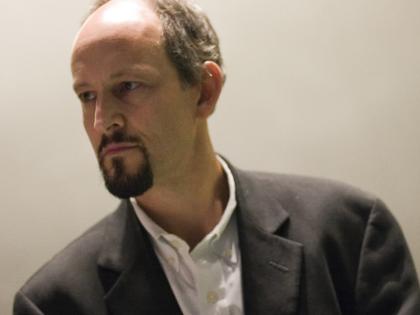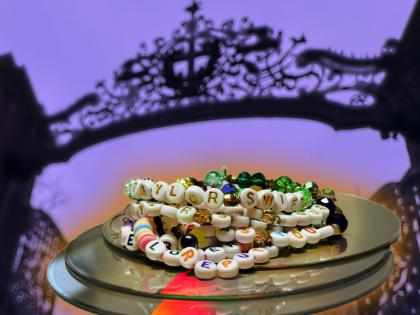On Commencement day they usher elderly alumni into the Tree Spread, point out empty seats to parents with their wooden batons, and beam festively at all and sundry. They are part of the venerable Committee for the Happy Observance of Commencement, which swells to about 250 alumni volunteers who “keep things running smoothly” during Harvard’s annual display of pride and pageantry. “These members bleed crimsonthere’s a great feeling of loyalty and commitment among them,” says chairwoman Leslie E. Greis ’80. “At Commencement, there is a wonderful swirl of people and banners and colors all over the Yard. The committee members just want to make sure that they, as ambassadors, help everyone enjoy the day.”
|
Although scores of “ad hoc” volunteers join on just for the big day, the core committee consists of 75 alumni appointed by the Harvard Alumni Association (HAA). They meet year-round to chart the duties of 18 teams with varying responsibilities: receive visitors, escort alumni and guests, hand out programs, act as the chief marshal’s honor guards, and supervise seating and processions. Moreover, “Happy Committee” alumni physicians are posted at the major luncheons (the Chief Marshal’s Spread and the Tree Spread) in case of emergencies. “Here you have over 30,000 people in the very difficult, confined space of Harvard Yard and a complex orchestration of people for eight hours of the day,” Greis explains. “The members are on their feet from about 7 in the morning until 4 in the afternoon. So they really earn their keep.”
That’s not to say the day unfolds without its wrinkles. One year, a wayward procession began winding its way out of the Yard before committee members steered it back on course. “You [also] have parents who have paid six figures for their children to go to Harvard and they want to see their children process and receive their diplomas,” Greis says. (Committee members often have to tell them that the best pictures are taken at the Houses, where the diplomas are actually awarded.) Finally, there is the dearth of physical space. “Our members have to manage anxious and excited family members who may not know that there are more people than seats,” she adds. “So you need a delicate, soft touch.”
Like that of committeeman Kenneth R. Rossano ’56, who spends the day escorting the University’s president. “I more or less ensure that he gets where he is supposed to be, on time,” Rossano explains. “There are 37,000 people at this happy celebrationand everybody wants to talk with the president. On numerous occasions people want to glad-hand him and have a few words with him off to the side. If he responded to all of them, he’d blow the hell out of the schedule.”
In the afternoon, for instance, Rossano and the president typically leave the chief marshal’s luncheon to gather behind a fife and drum corps and march to the John Harvard statue, where they join the alumni procession. “There’s a little dance that takes place where Larry [Summers] wants to meet the oldest graduates, and those from the [major reunion] classes,” reports Rossano, who has done this job since the beginning of Neil Rudenstine’s tenure. “Both Neil and Larry have made it a point to see the oldest classes, and they shake a lot of hands,” he adds. “It’s a wonderful, and I might say ‘happy,’ occasion.” This year, Rossano chose to suit up for his assignment again despite the less formal temptations of his class’s fiftieth-reunion festivities. “This is important to me,” he says of his diplomatic role, “and, as it turns out, it will be part of an historic function because this will be Larry’s last Commencement. I was happy to be there at the beginning and I am happy to be there at the last one.”
The Happy Committee first took shape in 1869, when 15 alumni volunteers ran the afternoon exercises (the annual meeting of the alumni and addresses by the president and Commencement speaker). “In those days, the only report given by the Happy Committee was that it wouldn’t rain on Commencement Day,” jokes committee secretary Warren “Renny” Little ’55 in his booklet about the HAA, Reflections on Our Past (1840-2005).
In 1990, he says, as the size of Commencement grew, the committee was asked as well to help the University Marshal’s office with the morning exercises, which feature the academic processions and the conferring of degrees on candidates from the Graduate School of Arts and Sciences, the University Extension School, all professional schools, the College, and the honorands. “Commencement director Grace Scheibner does the master planning for the morning and we respond to her needs,” Greis explains. These days, the committee’s role is outlined in a 23-page manual that reads like “a cross between a football playbook and the tax code,” she says with a laugh. “It’s very comprehensive.” (Appendix D, for example, offers a sample stage-seating chart; Appendix H is entitled “Afternoon Rain Plan.”)
There is even a dress code. Traditionally, male members wear top hats and tails. But the women’s wardrobethe subject of some past contentionhas changed over the years. In the 1980s, Happy Committee women were required to wear “a white dress with a red sash pinned over the shoulder with a carnation,” recalls Ellen McHugh LaFollette ’54, “and you felt you were the winner of the Kentucky Derbyonly you were the horse!” Some women refused to don the sash. Greis, who became chair in 2002, nixed hers because it got in the way of her walkie-talkie and other equipment on Commencement Day. She also chose to resolve the regalia question by appointing a subcommittee to research alternative garb.
As a member of that group, LaFollette proposed the crimson rosette that women wore for the first time last year in place of the sash. “I was reading an American history book with one of my grandchildren and saw a picture of saluting troops on Cambridge Common and noticed that George Washington’s three-cornered hat had this gorgeous ribbon,” she recalls. “I thought, ‘Let’s steal that ribbon from him.’” The decoration distinguished officers from enlisted ranks during the war, she says, and seemed especially fitting because Washington had spent a night in the Yard at Wadsworth House, the former home of the HAA. “Women typically wear the rosettethe ‘LaFollette Rosette’with a black suit,” Greis adds. “Hats, for women, are optional, and many do choose to wear them. We have had a couple of women wear top hats with regalia. But it is not a look for everybody….Let’s just say the women who wore them last year knew they looked darn sharp.”
As befits the momentous occasion. “Commencement is one of the wonderful parts of Harvard, and you get to see it all,” says LaFollette (whose husband, Charles ’51, M.B.A. ’53, is also a committee member). “All you have to do is make people happyand, after all, that is not a hard thing to do.”
Nell Porter Brown is the assistant editor of Harvard Magazine.







